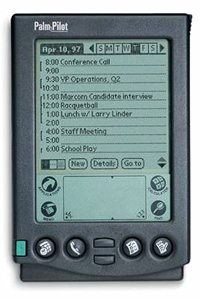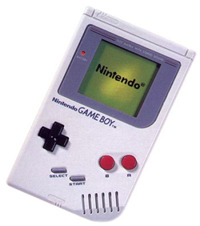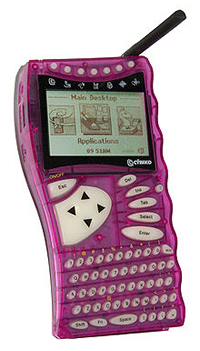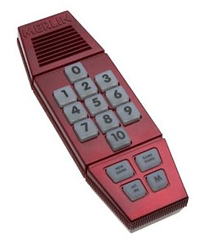In 1990, I began helping schools across the globe realize the transformational learning potential of a laptop for every child. From the start there was a recognition of the certain inevitability that every student would own their a personal mobile personal computer in the near future, whether school provided it or not. Twenty-one years later, way too few students have a personal computer and the very issue seems to become more controversial with each passing day.
 Schools and school districts who have come to the personal computing party decades late now have conjured a cheap less-empowering way to produce an illusion of modernity. They call it “Bring Your Own Device” (BYOD) or “Bring Your Own Technology” (BYOT) and it’s a terribly reckless idea for the following reasons.
Schools and school districts who have come to the personal computing party decades late now have conjured a cheap less-empowering way to produce an illusion of modernity. They call it “Bring Your Own Device” (BYOD) or “Bring Your Own Technology” (BYOT) and it’s a terribly reckless idea for the following reasons.
BYOD enshrines inequity
The only way to guarantee equitable educational experiences is for each student to have access to the same materials and learning opportunities. BYOD leaves this to chance with more affluent students continuing to have an unfair advantage over their classmates. This is particularly problematic in a society with growing economic disparity.
Real people don’t want a device
What was the last time you walked into a Best Buy or Apple Store and asked the clerk, “I’d like to buy a device please?” Nobody does that. You buy a computer. A device is something you buy for other people’s children when you’re pinching pennies or have too low expectations for children.
 BYOD simplistically creates false equivalencies between any object that happens to use electricity
BYOD simplistically creates false equivalencies between any object that happens to use electricity
Repeat after me! Cell phones are not computers! They may both contain microprocessors and batteries, but as of today, their functionality is quite different.
It is miseducative to make important educational decisions based on price!
A wise mentor of me told me long ago that important educational decisions should not be based on price. It’s immoral, ineffective and imprudent. Who is to blame when BYOD fails to realize its potential or creates unforeseen problems. For forty years, visionary educators like Alan Kay, Seymour Papert, David Thornburg, David Loader and countless others have demonstrated that the cost of providing every child with a powerful personal computer (laptop) is between 2-5% of the cost of schooling. These costs have fallen in recent years. Plenty of schools and districts have reordered priorities to provide each student with a personal laptop. Doing the right thing is a matter or priorities and leadership, not price point.
 BYOD narrows the learning process to information access and chat (when students aren’t being punished for either)
BYOD narrows the learning process to information access and chat (when students aren’t being punished for either)
Information access, note-taking and communication (presenting, sharing, publishing) are the low-hanging fruit of education and represent the tiniest fraction of what it means to learn. Looking up the answers to someone else’s questions online in order to write an essay or make a PowerPoint presentation reinforces the status quo at best while failing to unlock for children the wondrous opportunities provided by computational thinking.
BYOD increases teacher anxiety
Schools have largely failed to inspire teachers to use computers in even pedestrian ways after three decades of attempts. A cornucopia of various devices in the classroom will only amplify teacher anxiety and reduce use.
 BYOD diminishes the otherwise enormous potential of educational computing to the weakest “device” in the room
BYOD diminishes the otherwise enormous potential of educational computing to the weakest “device” in the room
Some educators are excited by using “technology” to teach things we have always wanted kids to learn, perhaps in a more efficient fashion. My work is driven by an understanding that the computer is an intellectual laboratory and vehicle for self-expression that makes it possible for children to learn and do things in ways and domains unthinkable or unavailable just a few years ago. Such empowerment is impaired when educational practice needs to be limited to the functionality of the least powerful device.
BYOD contributes to the growing narrative that education is not worthy of investment
We reap what we sow, educators who placate those who slash budgets by making unreasonable compromises at the expense of children, will find ever fewer resources during the next funding cycle. Education must not be viewed as some competitive, commercial, “every man for himself” enterprise that relies on children to find loose change behind the sofa cushions. Democracy and a high quality educational system requires adequate funding.
 Oh yeah, check out the brand new Macbook Pro, iPhone, iPad and high-def video camera being carried by the tech coordinator who decided that students should be happy with whatever hand-me-down devices they might scrounge. Let them eat cell phones!
Oh yeah, check out the brand new Macbook Pro, iPhone, iPad and high-def video camera being carried by the tech coordinator who decided that students should be happy with whatever hand-me-down devices they might scrounge. Let them eat cell phones!
It takes a special pitch to ask a school or school board to buy one of something for every student. You better make sure you ask for the right “device.” Kids need a personal computer capable of doing anything you imagine they should be able to do, plus leave plenty of room for growth and childlike ingenuity.
Of course teachers should welcome any object, device, book or idea a student brings to class that contributes to the learning process. Every thing a child brings to school in her heart, head or backpack is a potential gift to the learning environment. However, BYOD is bad policy that constrains student creativity, limits learning opportunities and will lead to less support for public education in the future.
Veteran educator Gary Stager, Ph.D. is the author of Twenty Things to Do with a Computer – Forward 50, co-author of Invent To Learn — Making, Tinkering, and Engineering in the Classroom, publisher at Constructing Modern Knowledge Press, and the founder of the Constructing Modern Knowledge summer institute. He led professional development in the world’s first 1:1 laptop schools thirty years ago and designed one of the oldest online graduate school programs. Gary is also the curator of The Seymour Papert archives at DailyPapert.com. Learn more about Gary here.





Colleges do BYOD. No one worries about digital divide. In schools why not let them bring if they want? Our huge need to be fair makes us so scared. So we can’t afford each student a laptop. If we did BYOD then only have to buy half we could but since it might indicate some inequalities we do nothing. Now no one gets one. Of course that is fair. Everyone is the same.
Gary,
What if there are no ‘devices’ in the classroom? Surely a kid who spends all day at school, without even touching a computer connected to the internet, should be able to bring their own to assist learning. That is just using their initiative.
@Darcy1968
This is the most “Bogus” article I have ever read. First of all, the devices shown in the article are “TOTALLY OUTDATED” and are not the items we use today. This is NOT the devices students bring to school. Students have web enabled devices that can perform 75% of the functions of a laptop and given the choice, most students prefer their Smartphone. I also believe that most people underestimate low income families owning devices. Cell providers have made owning an iPhone or Android very obtainable for everyone. Don’t kid yourself, everyone has a cell phone. In a recent poll in several of our schools, 83% of the students had Smartphone and wanted to use it in their everyday learning. These are majority Free & Reduced students in Title1 schools. As a district manager, I would rather purchase devices for 17% to use as opposed to 100% of our 60,000 students. BYOD is not perfect, but in an economy that can’t sustain millions of dollars each year to keep a fresh laptop in a student’s hand; this is an alternative we have to look at.
I disagree, Gary. BYOD coupled with 1-1 is what we have implemented in grades 5-8 in the past. Total chaos – kids learning with whatever they want to, whatever suits them in that situation – usually multiple devices. AND, kids collaborating.
Gary! You included a pic of a Merlin. Cool. If a kid brought one of those to my class, I’d be pretty happy.
Gary – THIS IS THE WORST ARTICLE ABOUT BYOD OF THE 21st CENTURY !
Look, the point is that Gary is right. Tablets/cell phones do not support the kinds of things we should be having all kids do – learning to program with Logo, etc, create rich media from scratch, explore freely without having to deal with the encumbrances of technology. A netbook computer with the same price as a tablet is a true computer, and costs less than textbooks. While I believe tablets will get new capabilibies soon, right now they are the trend du jour. I believe kids should ALWAYS have been allowed to use technologies from home, and to this extent, BYOD is long overdue. But, when BYOD means that you provide your own tool, or go without, we hurt kids. The real change we need is pedagogical, not technological, and the current state of tablets is a step back. And, to add insult to injury, I know of at least one school who is setting up a “tablet lab.”
When tablets let kids do the kinds of things they could do on an old Apple II, we will have made progress. I use tablets, but in conjunction with other tools. This makes sense.
My opinion about this article is that when you bring your own technology to school, it is useful because it can help you access different things for your studies. It’s faster too! On the other hand though it can be dangerous because you could pay a lot of money for your technology and it could be stolen.